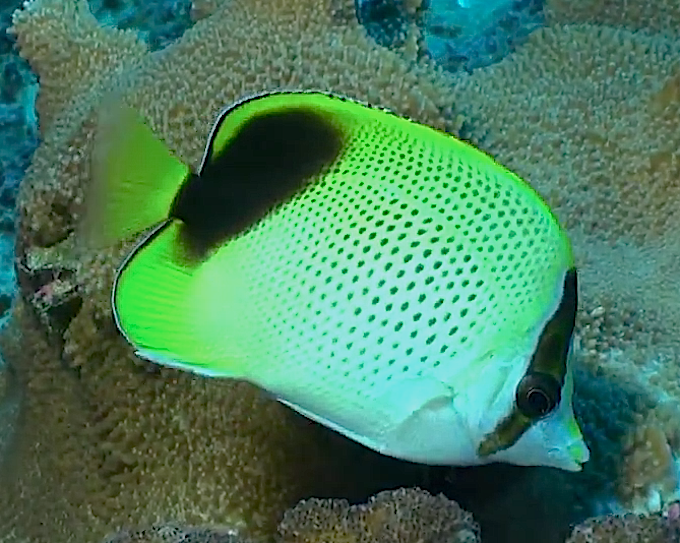Hybrid butterflyfish may be often overlooked by their angelfish counterparts, but we’re still seeing lots and lots of them in the wild and in the aquarium. Tinker’s butteflyfish is frequently observed crossing with closely related species, and less often we see Tinker’s butterflyfish hybridizing with the fourspot butterflyfish. The miliaris butterflyfish has hybridized with the multicinctus butterflyfish but despite both coming from Hawaii, the hybrid of Tinker’s and Miliaris butterlfyfish is an elusive one. Last year Robert Whitton and Rich Pyle discovered a tiny specimen of a hybrid between Chaetodon tinkeri and Chaetodon miliaris and this weekend they revisited the location of their discovery to see that the hybrid was still hanging around.

The Tinkers x Miliaris hybrid has grown larger and it is still paired with a lone pure-bred Tinker’s butterflyfish from last year, both of which have grown well since their first sighting. The unique Tinkers x Miliaris hybrid buttreflyfish was photographed last year and this time it was given the video treatment, making this one of the first specific video documentations of a hybrid butterflyfish in the wild. It will be very interesting to see how this half-hybrid pair of Tinker’s butterflyfish fare in the long term, not only cementing their pair-bond in a sea of miliaris butterflyfish but should they mature together we may see evolution in action with some three-quarter Tinker’s butterflyfish dropping in on Hawaiian reefs in the future.
[youtube]http://www.youtube.com/watch?v=Ic_G6njmYj0[/youtube]
In October 2011, Robert Whitton and Richard Pyle found a small juvenile hybrid butterflyfish while conducting a rebreather dive in deep water in the Hawaiian Islands. It was the first hybrid Chaetodon tinkeri x C. miliaris reported since the early 1970s. Interestingly, it was paired with a juvenile C. tinkeri, in an area where we have never seen C. tinkeri previously. We returned to the same spot on 19 August 2012, and were happy to find both fish were still there, much larger, and apparently thriving. We will continue to monitor this interesting pair in the months and years to come.





